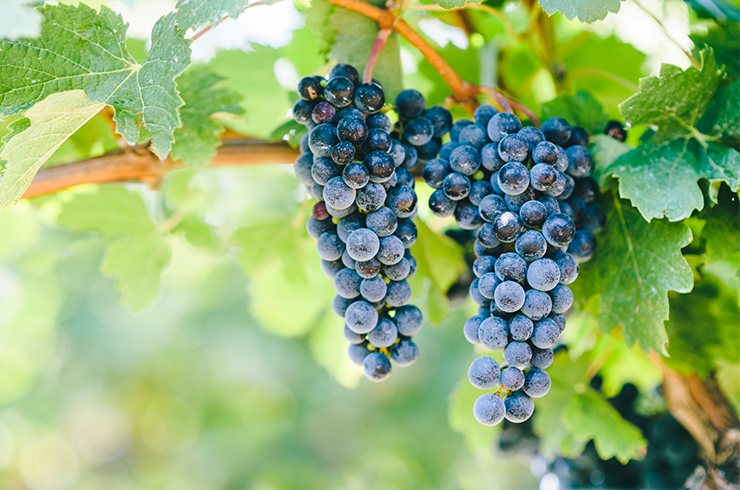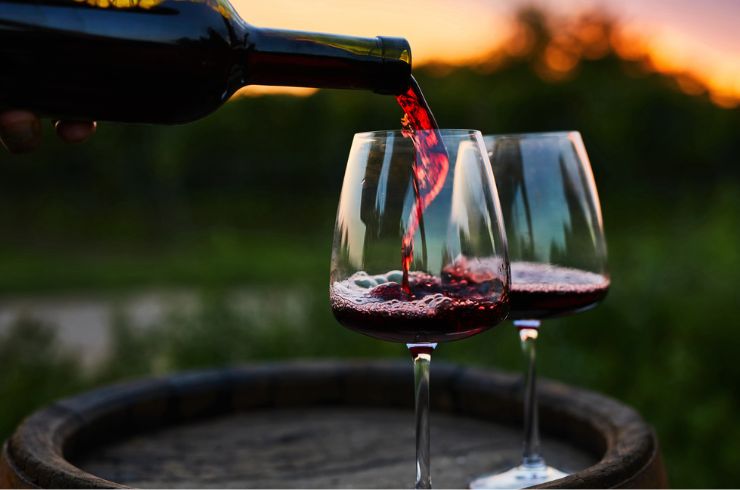In early June, I travelled to Ningxia in Northwest China for the 32nd edition of the Concours Mondial de Bruxelles, one of the world’s most prestigious international wine competitions.
Over the course of three days, 375 judges from 49 countries tasted an astonishing 7165 wines. Of those, 672 entries came from China – 352 from the Ningxia Hui Autonomous Region (Ningxia for short) and 236 from Ningxia's capital, Yinchuan.
Ningxia – China’s premier winegrowing region
As an Australian-born woman, second-generation Chinese on my father’s side, this was a pilgrimage I never expected to make – especially via the world of wine.
Travelling through Ningxia, the landscape unfolded with quiet drama. Endless roads stretched across russet-brown desert soils, interrupted only by the poplar trees lining the roadside like sentries. Crimson Morning Glory bloomed defiantly from the clay, and camel prints marked the sand where centuries of trade had passed.
Your hair catches the wind here, whipped around by passing trucks, heavy with goods. And as the dust begins to settle, the Helan Mountains rise with stoic grandeur, catching the last of the dusk light in their folds. If you're lucky, you’ll glimpse the silhouettes of the Western Xia Imperial Mausoleums and catch the scent of cumin on the breeze.
This is Ningxia – a place of ancient culture and modern ambition, now writing a modern tale in the language of wine.
China’s winemaking history and grape varieties
While China may seem like a new face in global wine, its viticultural history stretches back millennia. At the Neolithic site of Jiahu in Henan Province, traces of tartaric acid and tartrates – signs of early fermentation – have been found in pottery dating back to 7000–9000 BC.
China is also home to indigenous grape species, including Vitis amurensis, Vitis quinquangularis, and Vitis davidii, which contribute to its genetic diversity. In recent decades, international varieties such as cabernet sauvignon, merlot, chardonnay, viognier, and welschriesling have taken root here. Of particular note is marselan – a cross between cabernet sauvignon and grenache – which was first planted in China in 2003 and went into the ground in Ningxia in 2005. It has since become one of the region’s standout varieties, showing both elegance and site expression.
“For me, marselan holds the most promise,” said Dave Brookes, who was also in China for the Concours Mondial de Bruxelles, and who has been visiting China now for over 15 years. “From a mere 2.75 ha in 2001 to over 1000 today, it thrives in the country's diverse climates, from Ningxia's mineral-rich soils to Xinjiang's arid conditions, and produces wines that are distinctly Chinese rather than imitations of European styles. It has a deep vibrant colour (almost glass-staining in some examples!) and an expressive exuberance to its form which ticks a lot of boxes for me.”
Ningxia’s climate and subregions
Ningxia is a relatively compact region, spanning 456km long and just 250km wide. Most of its 40,000ha of vineyards are planted in the foothills of the Helan Mountains on its western border, at an elevation of between 1000–1200 meters, although some extend onto the plain that lies between the mountains and the Yellow River in the east. Although there’s plenty of sunshine in summer, winters are cold enough that growers are often forced to bury their vines under the earth to survive the harsh conditions.
There are four main subregions: Shizuishan, in the north; Yinchuan (including the Helan subregion); Qingtongxia, in the mid-south; and Hongsipu, furthest south. The climate is generally continental and arid, although the subtle shifts in soil, elevation, and microclimate between each zone allow producers to explore site expression and craft increasingly sophisticated wines.
Among the standouts I discovered were Li’s Vineyard, Silver Heights, Château Mihope, Jade Vineyard, Lilan Winery, Domaine Chandon Ningxia, and Kanaan Winery.
A Story I Now Hold
With 228 wineries and an annual production exceeding 138 million bottles, Ningxia is undeniably China’s premier winegrowing region. Its momentum feels unmistakable. Its people, culture, food, and wine have moved me deeply, stirring a personal connection to a lineage I had only ever heard about in stories.
Here, amid the foothills and wind-swept plateaus, China is not just producing wine – it is shaping a bold, expressive new voice in the global conversation. I leave feeling compelled to share its story – and to carry a part of it forward as my own.
Latest Articles
-
Wine Lists
Shop these eight Australian shiraz wines that come highly recommended by the Tasting Team
10 Jul 2025 -
Travel
Visit the vineyard: Three must-visit cellar doors in Tasmania
10 Jul 2025 -
Spirits
The best Australian spirits reviewed by Halliday so far
9 Jul 2025 -
Wine Lists
The best Australian red wines under $30
9 Jul 2025



